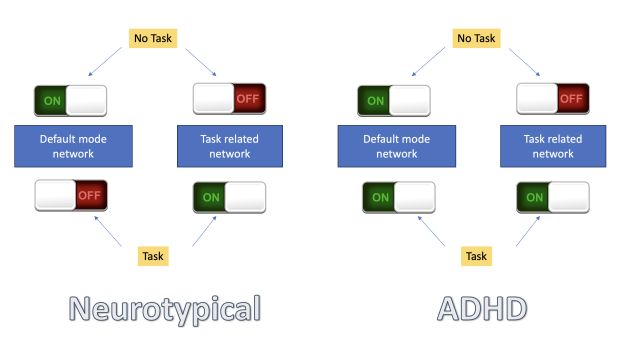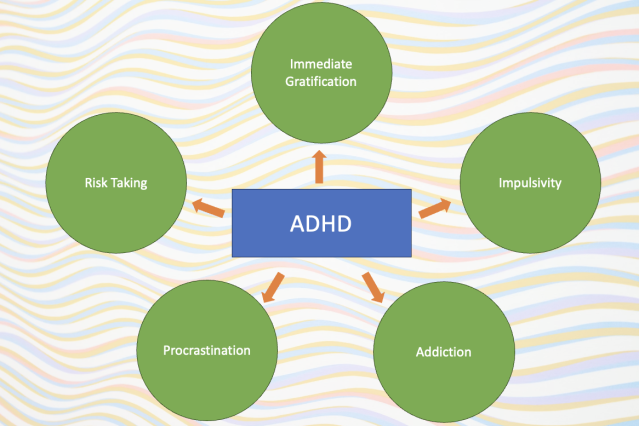ADHD
The Misunderstood ADHD Struggles
Approaching ADHD with knowledge and empathy.
Updated September 13, 2023 Reviewed by Monica Vilhauer
Key points
- ADHD is a neurodevelopmental condition that significantly impacts life outcomes.
- Children and adults with ADHD tend to take more risks and succumb to immediate gratification.
- Living with ADHD is a frustrating experience often misunderstood by those without the condition.

Tommy sat at his desk and he opened his laptop. The essay instructions were on the screen, and he dutifully began to read. However, after just a few minutes, his attention drifted, lured away by the intricate spider web that adorned the entry door. Tommy became frustrated as he realized that he couldn't recall a single word he'd just read. He made an effort to refocus, but his mind proved elusive, slipping away once more.
This scenario was all too familiar to Tommy. Every time he attempted to tackle his homework, it seemed like an uphill battle. His friends effortlessly breezed through assignments, while Tommy found himself wrestling with his wandering thoughts, constantly veering off course.
At the age of 13, Tommy received a diagnosis that shed light on his struggles: Attention Deficit and Hyperactivity Disorder (ADHD). It was a revelation that carried both relief and sadness. Finally, he understood that his inability to concentrate wasn't a character flaw, and he wasn't simply "lazy," as his parents and teachers had sometimes accused him of being.
But while the diagnosis provided clarity, it didn't provide a magical solution. Tommy's mind remained a restless wanderer, continually venturing down rabbit holes of distraction. Despite knowing the root cause of his difficulties, the challenge of managing his focus persisted, leaving him to grapple with his own mind, one essay at a time.
Research into the neural mechanisms underlying ADHD has unveiled an intriguing perspective. It suggests that ADHD is not primarily characterized by abnormalities within specific regions of the brain but is instead a disorder rooted in disruptions of functional connectivity.
A pivotal player in this connectivity conundrum is the default mode network (DMN). This network springs to life when individuals are in a state of rest and not actively engaged in cognitive tasks, like, for instance, tackling homework. Conversely, when we turn our attention to cognitive tasks, specialized task-related networks kick into gear to help us complete the task at hand. In those without ADHD, there exists a delicate balance between the DMN and these task-related networks. When one network becomes more active, the other tends to quiet down, creating a seamless transition between resting and cognitive engagement.

However, for individuals with ADHD, the DMN doesn't obediently retreat during cognitive tasks. Instead, it persists, stubbornly maintaining its activity. This unusual behavior within the DMN is associated with the intrusion of unrelated thoughts or daydreams during these tasks. It's as if there's an ongoing tug-of-war in the brain between the DMN and the cognitive demands of the moment.
This neurological battle offers an illuminating explanation for why those with ADHD often experience a constant, magnetic pull away from their current task, easily succumbing to distractions. It's not a mere lack of willpower; it's a neurological dance between two competing networks that makes focusing on a single task almost impossible. Unlike typically developing children, who often outgrow these difficulties as they mature, individuals with ADHD commonly continue to wrestle with these challenges throughout their lives. This enduring struggle can result in learning impediments and difficulties in social interaction.
In recent years, there has been a noticeable increase in the diagnosis of ADHD in the United States. Approximately 9.4% of children aged 4-17 are affected, with boys more commonly diagnosed than girls. Moreover, around 4.4% of adults in the US are believed to have ADHD, although this number may be underestimated.

One area where the impact of ADHD becomes evident is decision-making. Decision-making is closely intertwined with cognitive abilities, as it involves assessing various options and choosing the most favorable one. Individuals with ADHD often exhibit differences in their decision-making styles compared to neurotypical individuals, especially in decisions involving risk and the consideration of future consequences. This inclination toward risk-taking often persists into adolescence and adulthood, leading to behaviors such as delinquency and substance abuse.
Raising a child with ADHD like Tommy can be a daunting journey for parents. Understanding what their child is experiencing, including difficulties in focusing, daydreaming, procrastination, non-compliance with instructions, and restlessness, can be perplexing. It's essential for parents to recognize that these behaviors are not intentional; children with ADHD require their parents' patience and understanding. Living with ADHD can be an extremely frustrating experience. Individuals often recognize that their actions are suboptimal, yet they feel powerless and incapable of altering them. Additionally, they grapple with the challenge of being misunderstood, as it's difficult to convey their experiences to those who don't share the condition. By approaching ADHD with empathy and knowledge, we can make a meaningful difference in the lives of those affected by this condition, helping them navigate their unique paths to success and well-being.
References
I. Brocas, "Decision-making and ADHD", LABEL reports April 2020
I. Brocas, "The Neuroscience of ADHD: Technical Report", LABEL reports, April 2020


